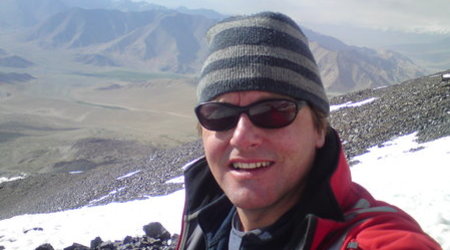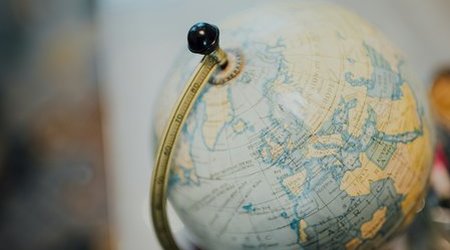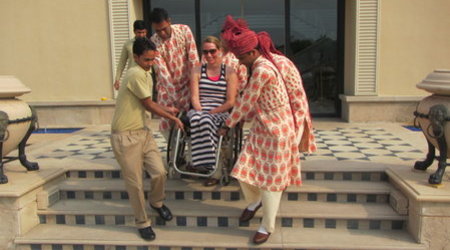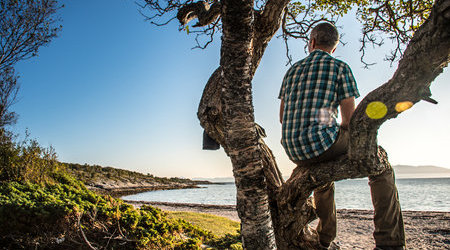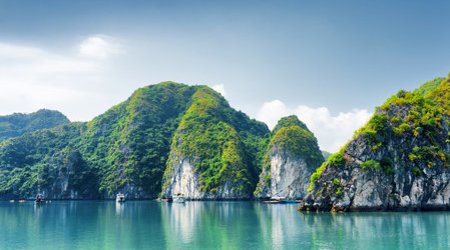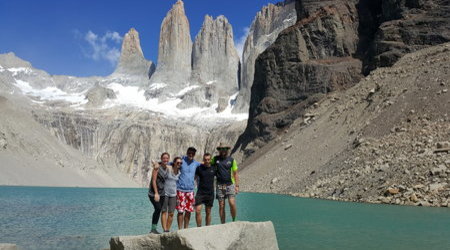Please enter your username and password to logon to the member pages
FIND YOUR AITO ASSURED HOLIDAY
What To Consider When You Are Climbing Your First Mountain
08 May 2022
For the uninitiated the journey to the top of a mountain begins with the question of which mountain and when, agrees on the who with and with what, moves onto the how much and the dangers of the what if and settles for some time on the how.
During the climb there is often some deep questioning of the why (?), but on the summit this becomes oh wow. As a guide I love seeing the wow moment in peoples eyes when the 360 degree view from the summit is reached, the elation and the achievement. For many years I have been mentoring people on their journey of peaks around the world and yes, some of them have got as high as the top of Everest.
It all begins with the first mountain.
For me it was a Scottish peak on a school trip when I was eleven and something about the absorption in the physical task, the mental commitment, the feeling of being in nature and part of it, was all-consuming. Over my teenage years I walked in most of the ranges in the United Kingdom until one day I went to climb my first alpine peak. I remember the sheer excitement of climbing those jagged snowcapped peaks on routes made famous by my childhood heroes.
But this paled to my first excursion to Nepal and my first climb amongst those giants of the Himalayas. And then my first 8000 metre peak in Tibet without bottled oxygen, gasping and ecstatic that I could actually do this type of high altitude climbing. On every climb, I feel more and more elated the higher I go.
Be Realistic
Advising people on how they should climb their first mountain is part of my job. It has to be a realistic assessment of expectations versus abilities, it has to be safe and enjoyable but also challenging. Edmund Hillary said “everyone loves a challenge, but not many people like hardship”. I want people to come back to the mountains, so the first big one is always important. People invest a lot of hopes and fears and of course money into the experience. So here are my top tips for what to consider when you’re contemplating your first big mountain.
Travel at the Right Time
Learn about the best times to climb mountains in different regions of the world. Travelling beyond your own country opens up more opportunities to climb mountains in different climatic zones and geographies. For example, the best climbing in Europe is June to September, in New Zealand it's December to March, and in Alaska it's June and July. Within each season you will then find suitability according to the grade of the climb, weather variations locally, accessibility and local conditions.
For example, permanent snow means more skills to manage that terrain. Lots of peaks have snow on in the height of summer but some, like Kilimanjaro, have summit glaciers which you can walk around.
There is no technical definition of a mountain except that it is regarded to be more than 1,000 feet high. From the point of view of gradient volcanoes are generally speaking easier than alpine peaks because they are less pointy with steep sides. They do have other challenging issues, like being still active on Mount Etna, but you are less likely to need roped up which takes things to a higher level on any peak.
Delve into the Details: Explore the Nuances
Consider also how remote the area is, the accessibility and time spent reaching the mountain, and the local culture and politics. Some areas are sensitive and can be dangerous, so check the FCO website of the country.
I would challenge stereotypes though; Mount Damavand in Iran might be considered a difficult place to visit, but in reality the hospitality is wonderful and it’s a great experience in a culturally fascinating land. Doing a bit of research beforehand is vital, about the mountain itself and also general mountaineering skills; not least what to pack.
Pack the Right Gear
It’s important to have the right equipment to stay warm and dry and protected from the weather. Primarily your outer layer or ‘shell’ needs to be waterproof and windproof and insulated if you’re going high and cold. Under that you need a layering system of fleece and something like merino wool against your skin (the base layer) to ensure that air is trapped and kept warm while perspiration is wicked away.
Fabrics now are lightweight and technically highly efficient but take expert advice on specific qualities needed for the climate you are visiting. There is so much on offer that it’s easy to get overwhelmed and frankly people often choose just on the basis of colour and looking nice.
Boots are a significant purchase and my advice would be to consider what you might do in the future, so your boots can be used for as many trips as possible. Good hiking boots are a must for any mountain trip, but once you go on to snow or go high then you will need insulated boots which can take crampons. Ensure you’re buying the right boot for the right type of mountain.
Gear Up Mentally
Mental fortitude and emotional stability is important on a mountain expedition. It’s not a great place for egos, even though the sport does tend to attract egotistical characters. You need to make sound judgements about safety and self-preservation, where decision making is tested with potentially major consequences. Even if you are being guided, ultimately it is you who decides what you want to do.
A lot of mountain climbing is about your attitude in an environment outside your usual routine, and part of the allure is to find out something about yourself.
Get Hiking Fit
Getting fit is an obvious preparation for mountain climbing, anything that improves strength and endurance will be useful. The best way to train to climb a mountain is to get fit on hills, so do lots of preparatory short hikes with a pack on. This will help in getting you used to your equipment and what works for you.
Everyone has their ‘personal climate’ so how you wear your clothes ends up being a personal matter, and this is the same for training. Some people have excellent aerobic fitness while others don’t so you may need to concentrate on cardiovascular training like swimming, or step machines to build up the calf and thigh muscles.
Take Care of the Environment
Be respectful of the environment in the mountains, it is a fragile one that mountaineers feel strongly about. Most of us feel the sense of privilege to visit these high places so we try not to abuse local amenities or ride roughshod over local cultures. We try to leave no trace and be an advocate for wilderness protection.
Learn Some Specialist Skills
Consider doing a training course for climbing on snow and ice, which will give you lots of confidence to go on a guided expedition which might be ‘semi-technical’. The national mountain centres have some great courses to cover things like using an ice axe to self arrest, cut steps, glissade and climb on ice, using your crampons correctly and walking safely on glaciers, crossing crevasses and snow bridges, avalanche safety, first aid and various climbing techniques and skills, plus how to use a map! Don’t worry about feeling overwhelmed, the guides make it fun and you can learn a huge amount in a short space of time.
Your first climb should really be a non-technical walk though, something iconic like Kilimanjaro which will take you high and give you a sense of camping on the mountain and being challenged on the summit day. It’s an incredibly special feeling to get to the top. It’s best to do this as part of a guided trip, but choose your provider wisely. Perhaps you could start with whether the company has a mountaineering pedigree.
Try something which would be regarded as high altitude, anything above 4000 metres, to give you that feeling of a workout in thin air. You’ll get the feeling for climbing and camping and working as a team; train well and remember that every climb can be that little bit harder and higher, so don't try to overdo it to begin with.
After Your First Ascent: What Lies Beyond the Summit
Move onto other expedition peaks which require longer walk-ins, a better mountaineering knowledge, more camping skills and a bit more exposure. This will help improve your skills incrementally and build confidence. Try glaciated peaks which require those basic technical skills. Volcanoes are great beginner mountains of this type – Ecuador, Mexico are good options – and move on to trekking peaks in Nepal like Island Peak. From here the sky really is the limit.
I mentor a lot of clients who have mountaineering aspirations and everyone wants to know the perfect journey to get to the top of Everest or such like. Mountaineering has several disciplines and it’s up to you which way you want to go. Many people spend a fulfilling lifetime exploring the Scottish hills in summer and winter, some people move home to the Alps and spend many happy years on those peaks, while others go further afield to the Greater Ranges and combine the sense of exploration with high altitude, and others aim for a certain aesthetic with their climbing. I for example like climbing 8000 metre peaks without bottled oxygen and climbing in a lightweight alpine style.
Whatever your journey, your first mountain is one you will never forget. The lure of the outdoors and the freedom of the hills are so often written about, but it’s an individual experience. For me, the feeling you get at the top of a mountain is one that changes you when you live your life below.
Categories:
Travel Advice

